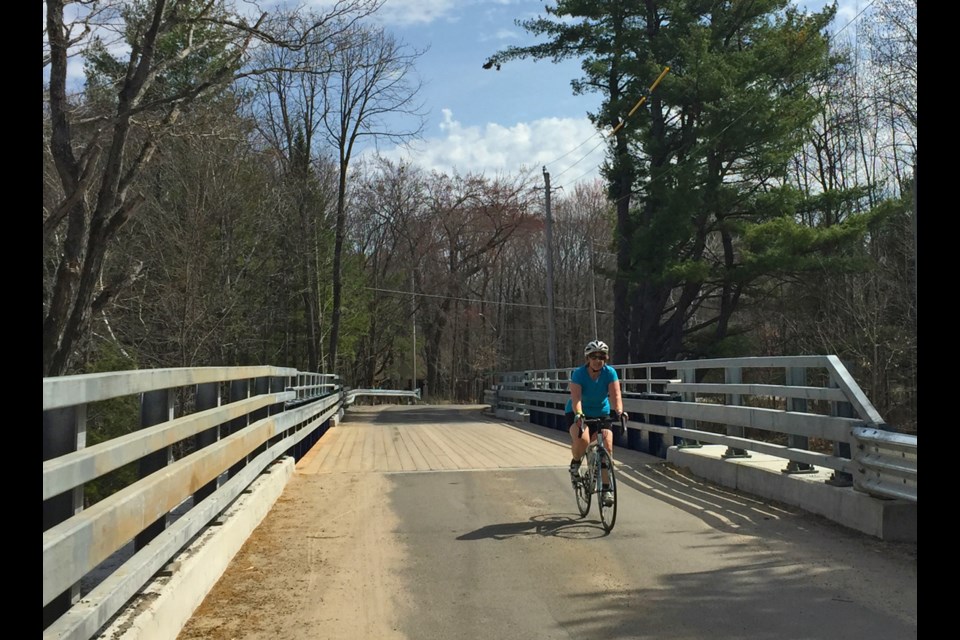If you feel like going for a bike adventure, but can’t go too far from home, here’s a route that takes you around Lake Couchiching that has lots of opportunities for exploring.
The 55-km route, starting from the Atherley Narrows, travels through two townships, the Chippewas of Rama First Nation, the City of Orillia and features three unique national historic sites. It also passes through or nearby lakeside parks, Simcoe County forests, and offers a variety of trails and paved roads, suitable for road or gravel bikes.
The first historic site on the route is the Mnjikaning Fish Weirs, the largest and best preserved wooden fish weirs known in eastern North America. The weirs were in use from about 3300 BC until the recent past. Today the Anishinaabeg are stewards of the site.
From the Narrows, the route follows the Ramara Trail until it meets Rama Road, which takes you to Washago, a great place to stop for a snack or a rest stop (and swim) at Centennial Park.
Beyond Washago, the route takes you across Lock 42 on the Trent-Severn Waterway, the second national historic site. This is a 386-kilometre-long canal route connecting Lake Ontario at Trenton to Georgian Bay, Lake Huron, at Port Severn, operated by Parks Canada. It is open for navigation from May until October, while its shore lands and bridges are open year-round. (Note: the bridge at Lock 42, which had been under construction for the last year or two, is now open!)
The route back into Orillia follows (mostly) quiet roadways in Severn Township as well as the Uhthoff Trail and the Lightfoot/Millenium Trail, which follows the Orillia waterfront, and passes through Couchiching Beach Park and Tudhope Park.
Just off the trail near Tudhope Park, you will find the third national historic site, the Leacock Museum on Brewery Bay, formerly the summer home of renowned Canadian author and academic, Stephen Leacock. His book, Sunshine Sketches of a Little Town (1912), is said to have been inspired by Leacock’s time at his summer home in Orillia.
The trail ends back at the Narrows, the site of a swing bridge, once operated as part of the Grand Trunk Railway. This completes the cycle tour around Lake Couchiching, a journey that offers lots of variety as well as opportunities to get to know the history of the area.
While local cyclists regularly enjoy this route, many are hopeful that the trail system continues to expand in order to provide a safer and more enjoyable ride. In recent years, municipal representatives and community volunteers have been working on the possibility of linking former railway lines at the Narrows and along the eastern side of the lake.
With the historical significance of Lake Couchiching, and its associated railway and waterways, it makes sense to re-connect these historical routes for recreation and tourism – “If you build it, they will come.” – that would be post-COVID.
In the meantime, I hope you get a chance to get on your bike and enjoy some of the beautiful and historical attractions we have around Lake Couchiching.
